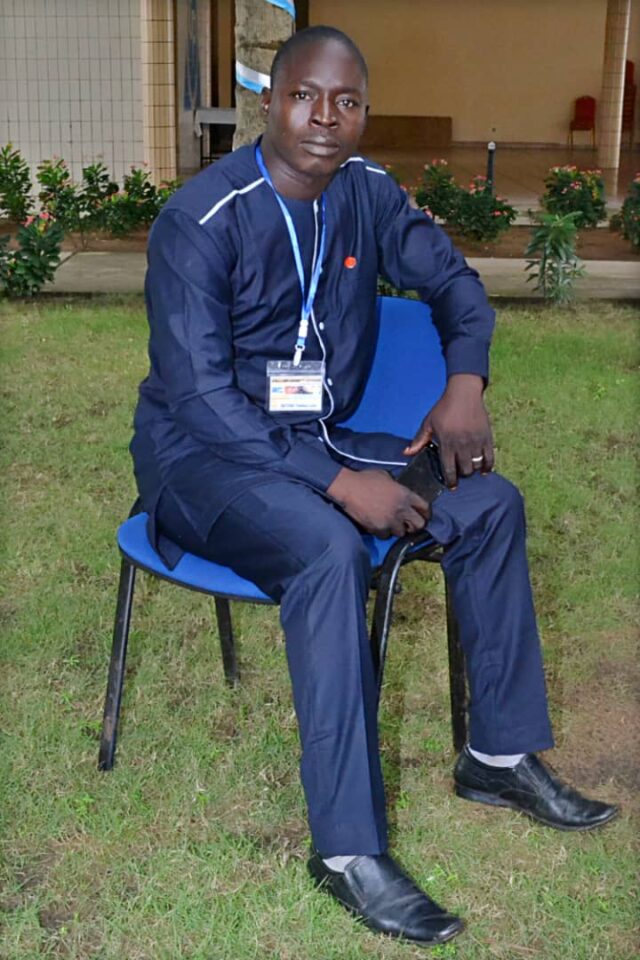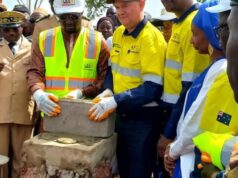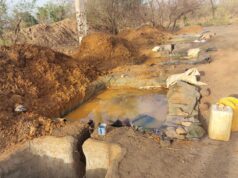The rehabilitation of industrial mining sites in Burkina Faso is not effective. This non-rehabilitation of mining sites at the end of their exploitation can be partly explained by the lack of financial means to cover the costs of the committee sessions that have been set up, according to Yomboé Juste Bationo, Environmental Inspector. He recommends the revision of the texts to correct this insufficiency in the third part of the interview granted to Mines Actu Burkina.
Mines Actu Burkina: Let’s talk about the rehabilitation of mining sites, where are we today with the process?
Yomboé Juste Bationo: The rehabilitation of mining sites is a process that is defined as the set of operations (redevelopment, decontamination treatment, confinement, waste disposal, institutional controls, etc.) carried out in order to make a site suitable for a given use. It can be said that the process is effective and on track with the adoption of Decree n°2017- 0068/PRES/PM/MEMC/MEEVCC/MINEFID/MATDSI of 15 February 2017 on the organisation, functioning and modalities for the collection of resources of the Mine Rehabilitation and Closure Fund (FRFM), Inter-ministerial Order n°2019-554/ MEEVCC/ MMC/ MINEFID/ MATDCS of 30 October 2019 on the creation of the inter-ministerial technical committee for the examination of plans and programmes for the rehabilitation and closure of mines and quarries (CT/EV), the inter-ministerial committee for the monitoring and control of rehabilitation and closure of mines and quarries (CT/SC), and the setting of conditions for validation disbursement, control of rehabilitation works and determination of eligible works, the order n°2020-392/MEEVCC/CAB of July 2, 2020 concerning the members of the interministerial technical committee for the examination of the plans and programmes for the rehabilitation and closure of mines and quarries, the opening of accounts in the books of the BCEAO by the Intervention Fund for the Environment (FIE) for the benefit of the mining companies, the transfer of contributions to the FRFM from the commercial banks to the accounts of the BCEAO opened for this purpose.
Why there are no sites rehabilitated?
Rehabilitation is a long process with very often many requirements, which explains the prudence and/or slowness observed at the level of the administration. It requires a frank collaboration of all actors (public administration, civil society, local populations and local authorities) to facilitate environmental monitoring and control even after closure. However, in my humble opinion, the failure to rehabilitate mining sites at the end of operations can be partly explained by the lack of financial resources to cover the costs of sessions of the inter-ministerial technical committee for the examination of plans and programmes for the rehabilitation and closure of mines and quarries (CT/EV). In fact, expenses relating to rehabilitation and closure work on mining sites can only be authorised after a precise evaluation of the cost of rehabilitation and closure of mining sites has been carried out and the CT/EV’s evaluation report has been transmitted, highlighting the conclusions of the work, the final opinion, the list of members who participated in the work and the final version of the rehabilitation and closure plan to the Board of Directors of the Environmental Intervention Fund (FIE) and the drawing up of a report on the physical and financial execution of the work for the previous year, if applicable. This does not allow the administration to proceed with the release of funds for the holding of validation sessions of annual rehabilitation and closure plans and programmes. In addition, there is a lack of qualified staff and resources at ANEVE, DGPE and IGM to deal with the total rehabilitation of industrial mines at the end of their operations, and a lack of experience and training required in the identification of environmental impacts related to mining in order to contribute to the proper estimation of the costs of the said plans by some members of the Technical Committee on Environmental Assessments (COTEVE), which will be concluded by the Burkina Faso Court of Auditors (CC-BF) in 2021, in its report on the audit of the performance of environmental monitoring and rehabilitation of industrial mining sites in Burkina Faso from 2015 to 2019. As a result, the rehabilitation and closure plans for the Kalsaka and Essakane industrial mines, submitted in August 2015 and November 2020 respectively, have not yet been implemented despite the fact that KALSAKA MINING SA and IAMGOLD ESSAKANE SA are up to date with their contributions to the FRFM. If nothing is done to revise our regulations, the industrial mines of Nétiana, Inata, Ouaré, Youga, Taparko, Karma and Trevali Perkoa, which have been shut down or closed, will be in this situation without any form of rehabilitation or restoration. There is therefore a real urgency to take the necessary measures, because a mining site (artisanal or industrial) that is stopped or closed constitutes a real danger for the environment, both in terms of loss of vegetation cover, disturbance of ecological environments and public safety.
What best practice or advice in this area can you cite?
All mining permit holders and beneficiaries of industrial quarrying authorisations are obliged to fully rehabilitate their mining sites at the end of exploitation. To achieve this, the best practices consist of the progressive rehabilitation of disturbed areas by mining companies in accordance with the provisions of Decree n°2017-0068 of 15 February 2017 on the organisation, functioning and modalities of collection of the resources of the FRFM. The said decree stipulates that the holder and the beneficiary submit an annual rehabilitation programme with estimated costs to the inter-ministerial technical committee for the examination of plans and programmes for the rehabilitation and closure of mines and quarries (CT/EV). However, this committee, which is also responsible for examining rehabilitation plan update proposals and drawing up the annual report on the management of the fund and the state of implementation of rehabilitation plans, is still not operational. This leads some mining companies to undertake rehabilitation activities on the basis of non-validated rehabilitation and closure plans. This results in a lack of monitoring of progressive rehabilitation work by the State, which can lead to the abandonment of mining sites after exploitation and/or to the poor quality of such work.
With a perspective of revision of the texts, what are your proposals for improvement?
The proposal will be to revise our regulatory texts, in particular Decree n°2017-0068 of 15 February 2017 on the organisation, functioning and methods of perceiving the resources of the fund for the rehabilitation and closure of mining sites and Inter-ministerial Order n°2019-554 of 30 October 2019 on the creation of the CT/EV, the CT/SC and the setting of conditions for the validation, disbursement, and control of rehabilitation works and the determination of eligible works. Also, like the local development mining fund (LDMF), the budget of state structures must be used to cover the costs of CT/EV and CT/SC sessions. This will allow the resources of the FRFM to be used rationally for the effective implementation of mine rehabilitation and closure plans.
Final word
Given the security context marked by terrorist attacks on mining sites, it would seem necessary to proceed with the total rehabilitation of industrial mines that have been stopped and/or closed in Burkina Faso, and this will necessarily involve a revision of the regulations governing the mining sector. The State must also strengthen the capacities of the members of the CT/EV and the CT/SC and make rational use of the resources of the FRFM.
Interview by Elie Kaboré
#Mines_Actu_Burkina










